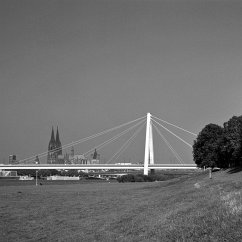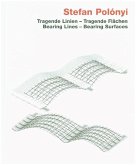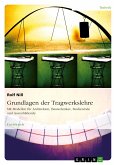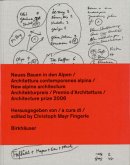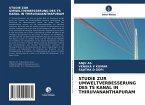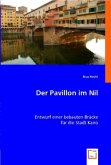Manfred Sack, in an essay about bridges: 'TheLatin word 'relegere' means to connect. The assumptionis that this is the basis of the word religion.The chief priest in Rome was the pontifexmaximus, the highest builder of bridges betweenman and god, between this world and the 'otherworld'. The Germanic tribes saw the bridge inthe rainbow physically before them, it was theirroad of light to Valhalla. For those who are disheartened,drugs are the bridge of escape intoother, very illusory, worlds of experience. Traditionbuilds bridges from yesterday to tomorrow.There are so many bridges: music, a letter, thesounds of a radio, phone conversations, lightsignals, Morse signals, calls. The building of bridgesis thus not only a physical process, but aspiritual and emotional event, a longing felt bythe soul. No wonder that those who design andcalculate bridges, who build them and thereforetake risks, at least subconsciously sense someof the extrasensory significance of their sensoryactivity.'And this is all the more true when we are talkingabout the bridges across the Rhine, the mostimportant European river, which is wreathed inmyths and legends and has inspired poetry andmusic like no other. Until the 19th century it wascrossed almost exclusively by means of ferries.With the onset of industrialization, more andmore goods had to be transported increasinglyrapidly. Today, over 250 bridges cross the river.They too now shape the unsurpassed diversityof the Rhine landscape.Since 1987, Riehle has photographed some150 Rhine bridges from the river's headwatersin Switzerland to the Rhine's delta in the Netherlands.The most interesting 100 bridges arepublished in this book.The son of an architect, Riehle was born in1949 in Triberg in the Black Forest, studied industrialdesign at the Folkwangschule für Gestaltungin Essen from 1971 until 1975 and fine artsat the Kunstakademie Düsseldorf from 1975 until1980. In Düsseldorf he was the protégé of thesculptor Erwin Heerich, who created highly notedbuildings on the Museum Insel Hombroich thatalso shaped the artistic thinking of Riehle.Gottfried Knapp worked as a film critic for tenyears before starting as art, architecture, andfilm editor for the arts page of the SüddeutscheZeitung. His numerous publications on art-historicaland architectural themes include monographson individual buildings and cataloguesabout painters, sculptors, draughtsmen, and photographicartists. Knapp has won several journalismprizes in the fields of architecture and monumentpreservation.
Hinweis: Dieser Artikel kann nur an eine deutsche Lieferadresse ausgeliefert werden.
Hinweis: Dieser Artikel kann nur an eine deutsche Lieferadresse ausgeliefert werden.

Bilder mit Spannweite: Tomas Riehle sammelt Rheinbrücken
Etwa 1235 Kilometer lang ist der Lauf des Rheins, von seinen drei Quellflüssen im Schweizer Kanton Graubünden bis zur Einmündung in die Nordsee in den Niederlanden. Und in dem Band des Fotografen Tomas Riehle findet man Bilder von fast 120 Brücken, die über ihn hinwegführen: von einem einfachen Brett, das unweit einer seiner Quellen einen Übergang herstellt, bis zur Erasmusbrücke in Rotterdam (Tomas Riehle: "Rheinbrücken / Rhine Bridges". Mit einem Essay von Gottfried Knapp. Edition Axel Menges, Stuttgart und London 2015. 260 S., geb., 86,- [Euro]). Alle Brücken über den Rhein sind das nicht einmal, dafür kommen einige Schleusen und Brückenruinen hinzu. Der Band setzt ganz auf die Fotografien, die nach Möglichkeit die gesamte Spannweite der Brücke in frontaler Ansicht einfangen, aber auch nicht sklavisch an dieser Perspektive hängen, um Besonderheiten ins Bild zu setzen. Unsere Abbildung, puristisch gewählt, zeigt eine der Stahlfachwerkbrücken für den Eisenbahnverkehr, denen selbst der Laie die Festigkeit und Stabilität anzusehen meint, die sie auszeichnen. Und wenn auch keine Pylone sich hier aufständern und Brückenbänder schwingen: Unmöglich kann man solcher filigranen Geometrie die Eleganz absprechen. (hmay)
Alle Rechte vorbehalten. © F.A.Z. GmbH, Frankfurt am Main

